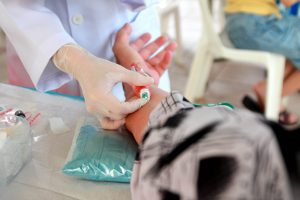Using the stochastic health state function to forecast healthcare demand and healthcare financing – Evidence from Singapore
February 15, 2021

Associate Professor Ngee Choon Chia and Mr Shu Peng Loh (both of NUS Department of Economics) propose a new methodology behind forecasting health variables in order to help plan and sustain healthcare funding for Singapore’s growing elderly population – one that reached 14% in 2019 and is predicted to rise to 20% by 2026.
In ‘Using the stochastic health state function to forecast healthcare demand and healthcare financing – Evidence from Singapore’ (Review of Development Economics, 2018) A/P Chia and Mr Loh utilise the combined approach of the Lee-Carter stochastic demographic model with the Skiadas health state model to project both elderly populations by 2030, estimated to reach 4.4 million in Singapore, as well as to determine aggregate healthcare claim costs to the Government.
The Lee-Carter model predicts population, life expectancy, mortality, and survival probabilities, and has been successfully used to project population data for G7 countries. The Skiadas model is a function that relates health state to deaths per age at a given time, and is ostensibly used to determine and compare healthy life expectancies; it has been used to compute and compare data in several European countries as well as in the United States.
The ‘3M’ financing system of Medisave (1984), Medishield (1990), and Medifund (1993) forms the backbone of Singapore’s state subsidised healthcare system, and the authors argue that their statistical modelling indicates a pressing need for the Singapore Government to put aside additional money in order to cover the funding gap for vulnerable elderly Singaporeans, who are likely to see their healthcare premiums rise in the coming years.
Within their simulation results, elderly Singaporeans admitted into hospitals are estimated to double between 2012 and 2030; however, they forecast a state of over-supply by 2050 due to surplus healthcare infrastructure. Projected aggregate claims, at a typical claims-to-hospital admission of 67%, are estimated to increase from S$337 million in 2013 to S$815 million by 2050.
A/P Chia and Mr Loh demonstrate that future healthcare need will outstrip supply at the typical hospital admission level, and that both healthcare premiums and claims will increase as Singapore’s population experiences a demographic shift. The most vulnerable members of society will be the hardest hit unless there is reform of the current ‘3M’ healthcare system.
Read the full article here.
